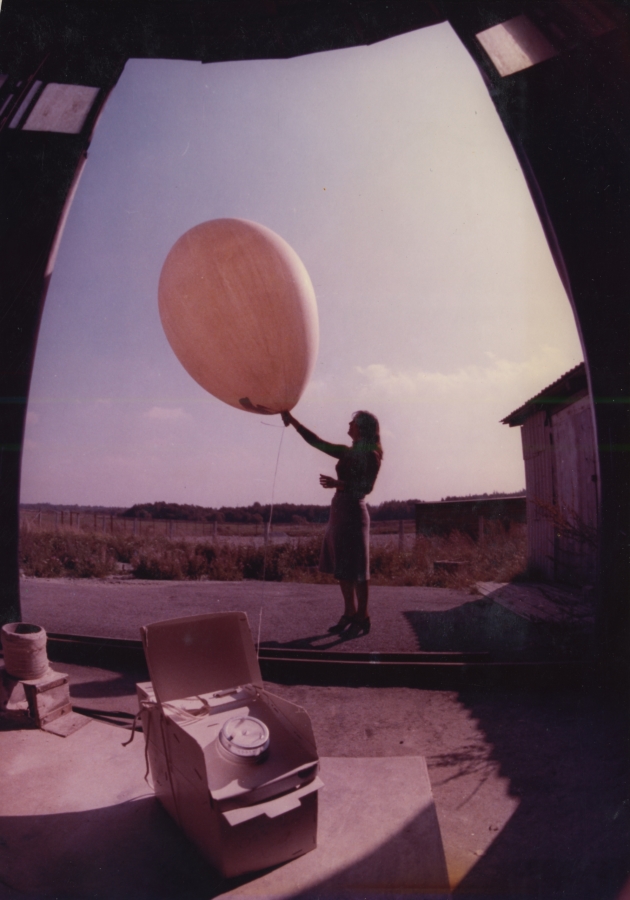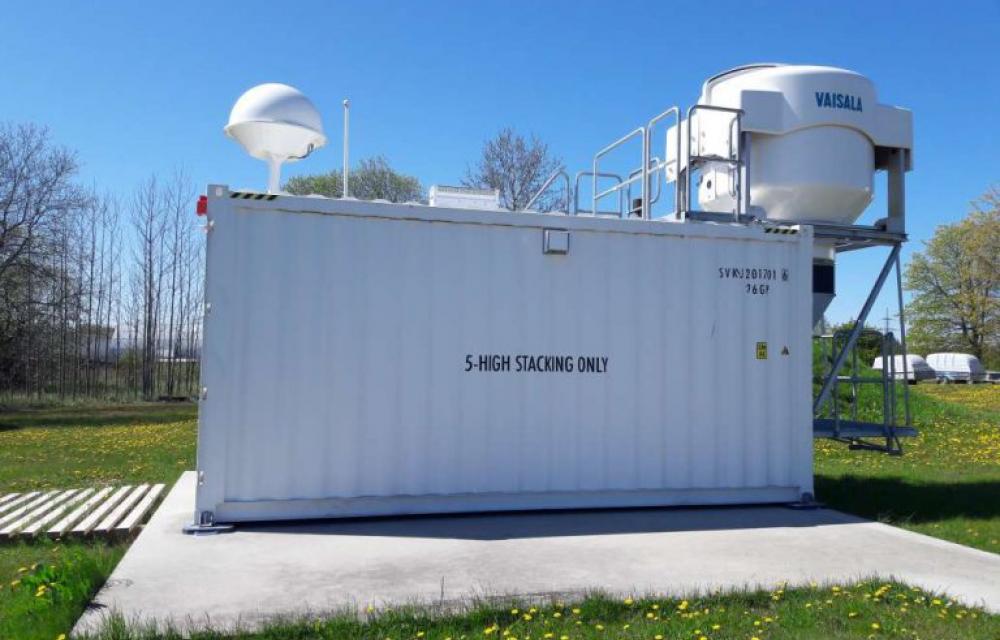Overview
A radiosonde is an electronic device attached to a hydrogen-filled weather balloon. The automatic station launches the weather balloon during the observation period. It is a so-called free-flight weather balloon, i.e. it is not attached to the station.

A radiosonde flight can last up to two hours. During this time, the sonde can rise to an altitude of more than 35 km and travel more than 300 km from the place where it was launched. If the radiosonde enters the strong jet stream, its horizontal movement speed can increase up to 400 km/h. Once the balloon is fully inflated and bursts, the radiosonde simply falls down.

Large spherical balloons are usually used to carry data recording or transmitting sensors into the upper air layers. They are called weather balloons. They are of sufficient size and quality to carry the necessary weight (200 g to 1 kg) up to 35 km altitude.
In Estonia, radiosounding is carried out once a day at 00:00 UTC at the Tallinn-Harku aerological station using an automatic sounding station.
The radiosonde measures air pressure, temperature and humidity as well as wind direction and speed in the upper air layers. The measurements show the vertical structure of clouds and (fog) layers. The information sent by the radiosonde is received by the forecasters at their workdesk – it is still an indispensable tool for preparing weather forecasts and warnings.
If you found a radiosonde
If you were lucky enough to find a radiosonde, please:
- take the radiosonde and, if possible, the string and the remains of the balloon with you;
- remove the batteries from the sonde. You can take the sonde to an electronic waste collection point or dispose of it with household waste. You can place the balloon with the string in household waste as well. If you can reuse the found materials in some way, that would be great, too;
- report your finding to @email or call 666 0901. If we know the sonde's serial number, we can tell when it was launched, how high it flew and what it measured.
